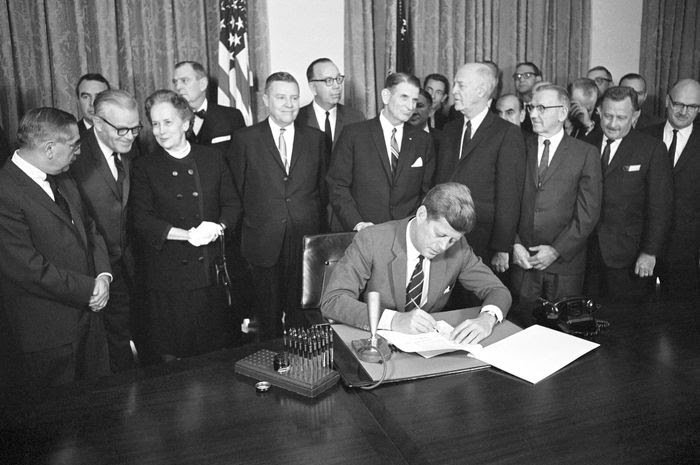Dying With Their Rights On
President John F. Kennedy signed the Community Mental Health Act, in October 1963.
For over forty years, my family has had the good fortune of living a comfortable and fulfilling urban-pedestrian life in a modern house we designed and built in 1984 along the south bank of Boulder Creek.
Our neighbors include the homeless, the drug addicts, and the mentally ill, who have been known to die from knifing, clubbing, shooting, drug overdose, drowning, or freezing.
In 1973, psychiatrist Darold Treffert coined the term “dying with their rights on.” This term perfectly describes what we are experiencing in Boulder, San Francisco, LA, Portland, Chicago, and many other urban areas: the laws have gone too far in protecting the rights of individuals at the expense of their safety and well-being.
I love the saying, “If you talk to God, you are praying; If God talks to you, you are insane.” The paramount question comes down to who is to decide who is mentally ill. It is estimated that there are at least 600,000 Americans living on our streets, and 1.9 million in our jails, many of whom struggle with mental illness. Even though nobody is saying we should go back to the state psychiatric hospitals – popularly known as asylums, the inhumanity of which was brought to light by Jack Nicholson in the movie One Flew Over the Cuckoo’s Nest – it is also not a sign of compassion to allow the mentally ill and drug addicts to live and die on our streets and in our jails.
The question of who is mentally ill and how they should be best treated may fluctuate over time, but common sense needs to be applied for the sake of everyone. Who can argue it was a mentally ill person in New York who pushed, for no reason, a 40-year-old financial analyst in front of an oncoming train to her instant death; or who stabbed to death a young graduate student in an upscale furniture store; and now in the tragic death of Jordan Neely, a mentally ill homeless man I previously wrote about.
In 1963, President John F. Kennedy signed the Community Mental Health Act, with the good intention of putting an end to the walled-off world of asylums in favor of 1500 local clinics in which to administer modern psychiatric drugs and needed therapies while maintaining the patients’ integrity and humanity. Let’s face it – sixty years later, it is clear that this experiment has failed.
We now need a new leader with a new plan to deal with our nearly two million homeless, mentally ill, and drug-addicted population.
— Sina.

